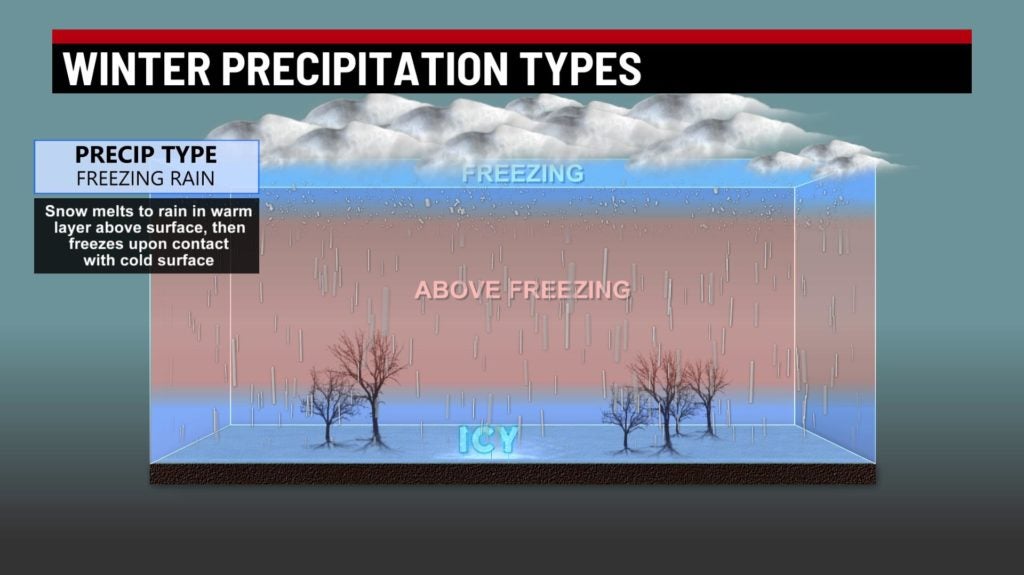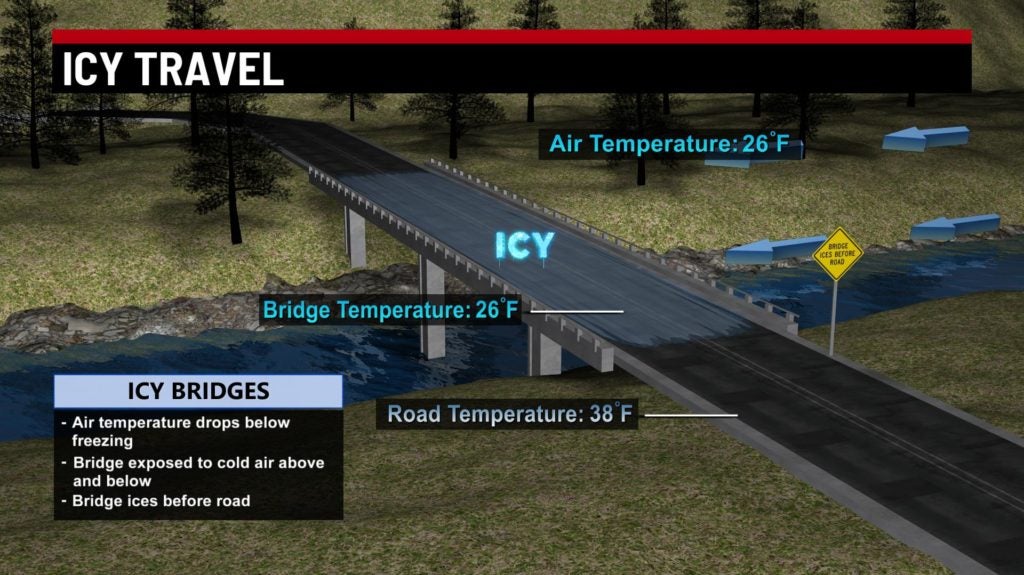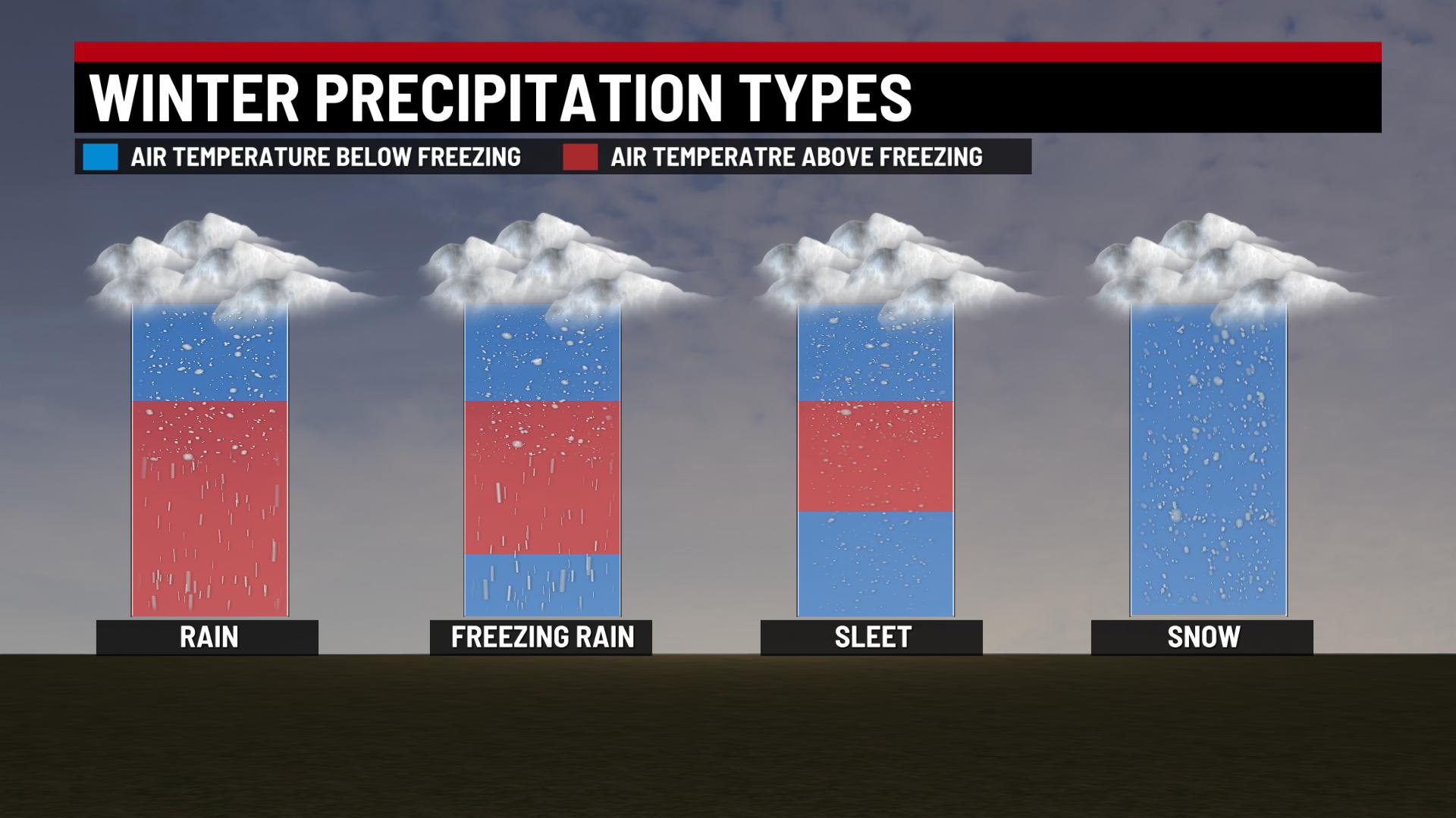What’s the difference between freezing rain, sleet and snow?
INDIANAPOLIS (WISH) — With another round of wintry precipitation in the forecast for the next few days, it’s a good time for a refresher on how the different types of wintry precipitation are created and the hazards that they can cause.
The different “modes” of wintry precipitation are all dependent on temperatures, and more specifically, the entire temperature column for cloudy to ground.
The graphic below shows the different types of precipitation we typically see during the colder season. It’s easy to see what creates rain and snow through the whole column of air. It’s important to remember that typically, all precipitation starts as snow during the cold season. Rain is created once the snow moves through above freezing temperatures in the lower level of the atmosphere. On the other hand, the snow will remain snow if the entire column of air is below freezing to at or just near the surface.

Where the forecast gets complected (and in my opinion, one of the hardest to forecast) is when we get into a freezing rain and sleet event. There is a little bit more that has to happen to create either modes of those precipitation types.
For both sleet and freezing rain, you need a temperatures inversion – that’s when temperatures rises with height. (In typical situations, temperatures usually cool with height).
The difference is how deep of shallow the colder air is near the surface. In both situations the temperatures are below freezing at and near the surface. However, in freezing rain situations, the colder air is shallow, which doesn’t give precipitation the opportunity to refreeze before it makes it to the surface.

With sleet, the warmer air layer aloft is more shallow, which allows the liquid precipitation to refreeze before it hits the surface.

While both sleet and freezing rain can cause travel problems, freezing rain can be much more crippling under the right conditions. Typically most susceptible to icy conditions under freezing rain conditions are bridges and overpasses. Because of the open air flow around bridges, the cool far more quickly than a non-elevated surface.
The most dangerous part of freezing rain is the black ice that it creates. It’s easy for us to see snow and sleet accumulation on the road, and with that we can adjust or travel conditions accordingly. With freezing rain, often times you won’t know the difference between an icy road and a wet road.

